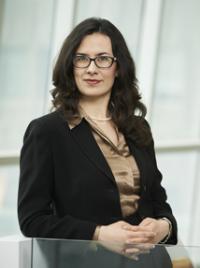
My research program consists of several different projects that all fall under umbrella of cardiac tissue engineering and regenerative medicine.
We are focused on pursuing molecular mechanisms governing the formation of contractile cardiac tissue in vitro as well as on practical strategies for treatment of myocardial infarction and heart failure through development of new biomaterials. We pursue the research programs alone (e.g., advanced bioreactors and cell tri-culture) or in collaboration with other PIs (e.g., microfluidic separation of heart cells).
Tissue Engineering of Cardiac Patches
The key projects in this area are focused on: 1) designing advanced bioreactors for cardiac tissue engineering capable of integrating mechanical and electrical stimuli with perfusion; 2) developing strategies to engineer vascularized myocardium based on the tri-culture of key heart cell types; and 3) using the engineered cardiac tissue as a model system for cardiac cell therapy or drug testing.
Injectable Biomaterials
Cell injection into the infracted myocardium can result in functional improvements, but the utility of this procedure in clinical settings is hampered by the massive death and washout of the injected cells (~90%). We are working on the development of injectable hydrogel that will promote survival and localization of the cardiomyocytes injected into the infracted myocardium. The hydrogels are functionalized with specific peptides capable of promoting the survival of cardiomyocytes.
Microfluidic Cell Separation
The existence of resident cardiac progenitor cells was recently reported by several research groups. The main goal of this project is to develop size and adhesion based microfluidic cell separation methods capable of fractionating cells from small samples such as human biopsies. The system would enable fractionation of endothelial cells, cardiomyocytes, fibroblasts, smooth muscle cells and resident progenitors without the need for labeling.
Microfabricated Systems for Cell Culture
In vivo multiple physical and biochemical stimuli act in concert to determine cell fate and phenotype. In order to engineer functional cardiac patches and develop advanced bioreactors, we need to understand interactive effects of multiple physical stimuli. We are currently developing microfabricated cell culture systems with built-in electrodes and precisely defined groove and ridge heights for simultaneous application of field stimulation and contact guidance cues.
We are focused on pursuing molecular mechanisms governing the formation of contractile cardiac tissue in vitro as well as on practical strategies for treatment of myocardial infarction and heart failure through development of new biomaterials. We pursue the research programs alone (e.g., advanced bioreactors and cell tri-culture) or in collaboration with other PIs (e.g., microfluidic separation of heart cells).
Tissue Engineering of Cardiac Patches
The key projects in this area are focused on: 1) designing advanced bioreactors for cardiac tissue engineering capable of integrating mechanical and electrical stimuli with perfusion; 2) developing strategies to engineer vascularized myocardium based on the tri-culture of key heart cell types; and 3) using the engineered cardiac tissue as a model system for cardiac cell therapy or drug testing.
Injectable Biomaterials
Cell injection into the infracted myocardium can result in functional improvements, but the utility of this procedure in clinical settings is hampered by the massive death and washout of the injected cells (~90%). We are working on the development of injectable hydrogel that will promote survival and localization of the cardiomyocytes injected into the infracted myocardium. The hydrogels are functionalized with specific peptides capable of promoting the survival of cardiomyocytes.
Microfluidic Cell Separation
The existence of resident cardiac progenitor cells was recently reported by several research groups. The main goal of this project is to develop size and adhesion based microfluidic cell separation methods capable of fractionating cells from small samples such as human biopsies. The system would enable fractionation of endothelial cells, cardiomyocytes, fibroblasts, smooth muscle cells and resident progenitors without the need for labeling.
Microfabricated Systems for Cell Culture
In vivo multiple physical and biochemical stimuli act in concert to determine cell fate and phenotype. In order to engineer functional cardiac patches and develop advanced bioreactors, we need to understand interactive effects of multiple physical stimuli. We are currently developing microfabricated cell culture systems with built-in electrodes and precisely defined groove and ridge heights for simultaneous application of field stimulation and contact guidance cues.





 https://orcid.org/0000-0003-1249-4135
https://orcid.org/0000-0003-1249-4135